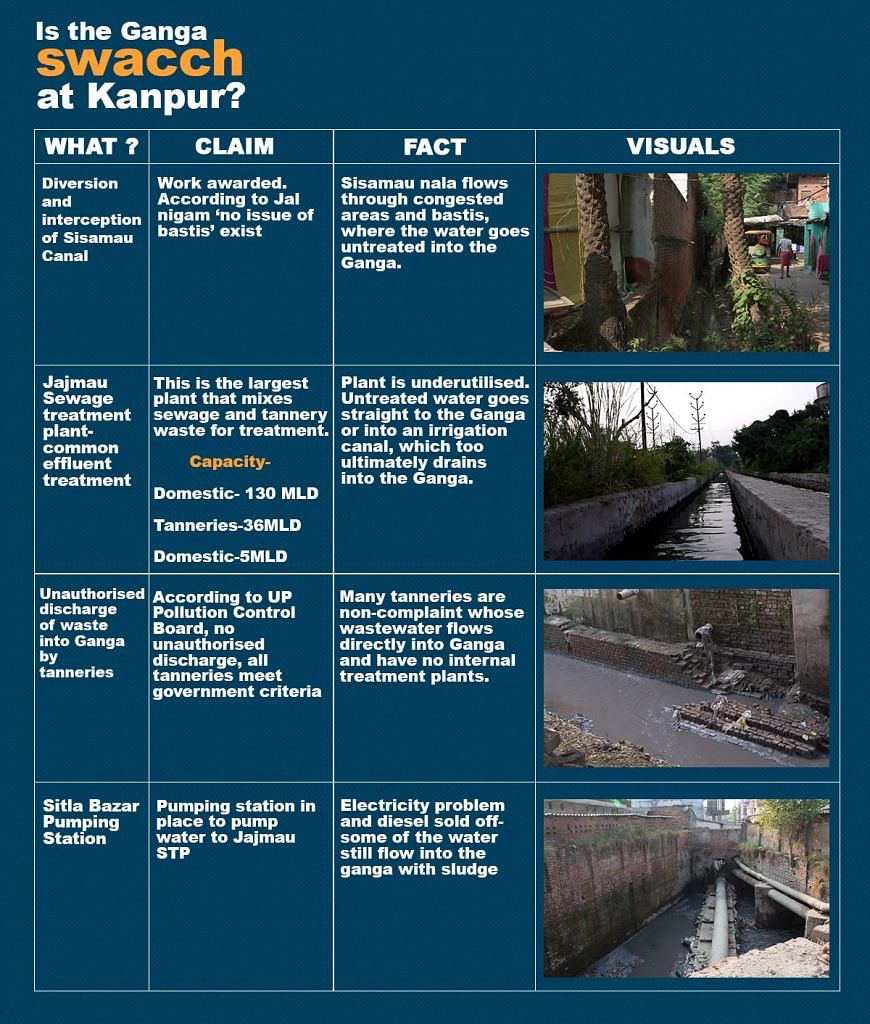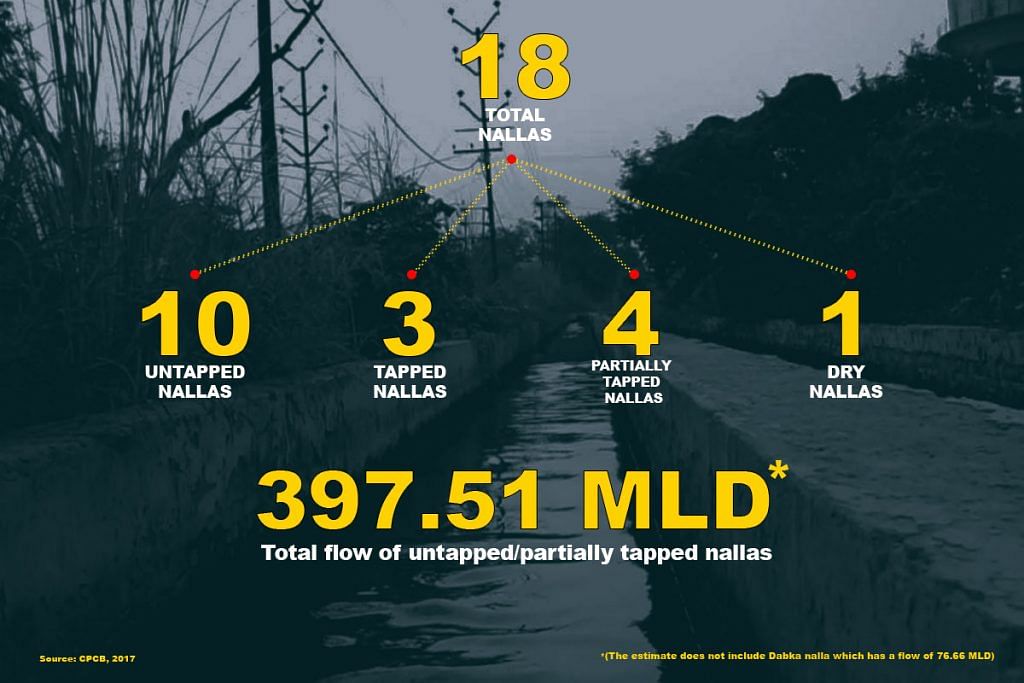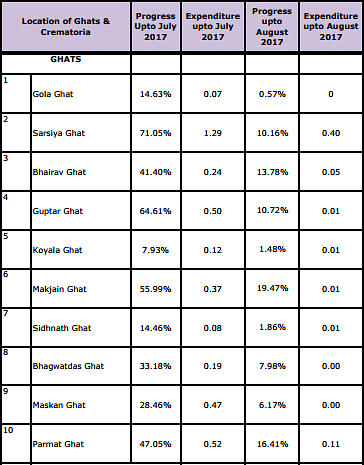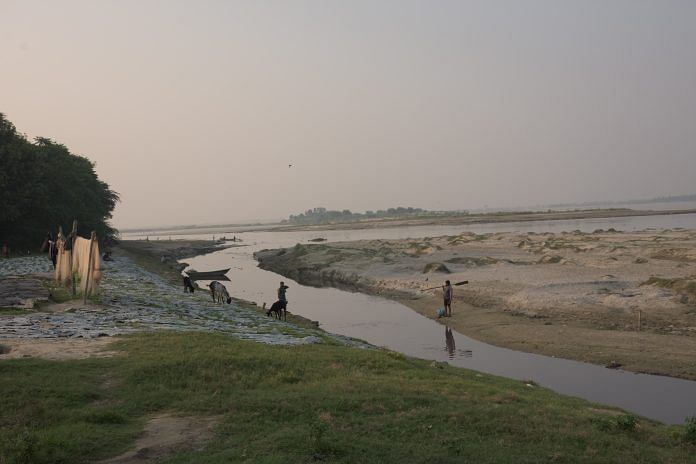CPCB says Kanpur is home to the ‘most polluted stretch’ of the Ganga; most of the tanneries release untreated waste into the river, flouting green norms.
Kanpur/New Delhi: An uninterrupted flow of sewage from city drains as well as untreated waste from industrial units into the Ganga has meant that the river is dying a slow death in Kanpur.
The Central Pollution Control Board has identified this as the ‘most polluted stretch’ of the Ganga even as the industries continue to flout green norms.
To make matters worse, the Narora barrage built in the upstream diverts a large quantity of water for irrigation purpose, resulting in a sluggish flow of the river in Kanpur.

Claims and counter-claims
According to a 2013 CPCB survey, Kanpur is home to about 475 of the total 764 ‘grossly polluting’ industries that have come up along the Ganga as it traverses the country. The CPCB has identified this belt as the one ‘requiring maximum attention’.
Tanneries are a major contributor to the pollution in the river. According to the CPCB, there are about 400 tanneries in the Jajmau area of Kanpur alone, generating about 50 MLD (million litres per day) of waste.
While it is mandatory for every tannery to set up an effluent treatment plant (ETP), most of the ETPs are allegedly lying unused.
Rakesh Jaiswal, founder of Eco Friends, an NGO working towards the protection of Ganga, claims many tanneries directly discharge waste into the river flouting the environmental norms.
“It has been observed that the primary treatment…is not satisfactory,” said a 2016 CPCB report.
Kuldeep Mishra, UPCPCB’s regional officer in Kanpur, however claims that there are no unregistered tanneries and those which are in operation meet all government criteria.
He also said that CPCB has a policy which mandates voluntary closure of tanneries if they generate effluent more than a prescribed limit. “Nearly 250 tanneries voluntarily closed their operation from 30 December to 2 January (2017). It’s an ongoing process,” Mishra added.
Another UP government official, closely working with the sewage treatment plant in Jajmau, presents a different picture.
“We treat around 8-9 MLD of tannery waste in the Jajmau CETP. But the waste generated is 50 MLD,” the official said on condition of anonymity. “The extra waste generated is illegal. Illegal units are in operation.”
Untreated sewage

Under the ‘Namami Gange’ project, the Sisamau drain (underground) in Kanpur, which alone carries 130 MLD of sewage, has been mapped so that it can be connected to the STPs. What remains unclear is how exactly it will be done since the drain passes through a residential area and a slum.
The Kanpur Jal Board, however, maintains that they are going ahead with the plan.
According to a report by the National Mission for Clean Ganga (NMCG), the sewage generated in Kanpur is 432.8 MLD, which is treated at two CETPs located in Jajmau and Bingawan.

But these plants remain grossly underutilised, causing untreated water to flow into the Ganga. Even when it is treated, the water does not meet prescribed standards, the NMCG report said.
According to CPCB the 130 MLD STP at Jajmau operates at 25 per cent of its capacity. This water is then used for irrigation.
“The concentration of many parameters such as biochemical oxygen demand (BOD), suspended solids, chlorides, oil and grease is not meeting the prescribed standards,” said a CPCB report from 2016.
Kanpur Jal Nigam, however, claims that the Jajmau CETP is “overutilised and a proposal to enhance the capacity is pending with the NMCG”.
Locals such as those near Sheetla Bazar told ThePrint the pumping station in their locality does not work properly due to erratic supply of electricity, causing the waste to again flow into the Ganga.
“The staff at the pumping station sell the diesel meant for running generators to outsiders. That’s why the pump does not work whenever there is a power cut,” said Jaiswal.
A Jal Nigam official denied this. “Selling diesel is out of question since these places face no electricity issues.”
Blame game continues
The maintenance cost of the central effluent treatment plants (CETP) is to be borne by the industrial units and the government. However, tannery owners blame the government for the poor upkeep of the CETPs.
“Infrastructure development is the duty of the government. The current CETPs are not adequate to treat the large amount waste generated,” said Nayyar Jamal, general secretary, Kanpur Small Tanners’ Association. “We are ready to pay the operation and maintenance costs if their capacity is augmented.”
However, the operation and maintenance charges paid by the industry have not been revised in the past 25 years, claims the official attached to the Jajmau STP-CETP.
Revamp of ghats

Namami Gange lays stress on renovation and beautification of ghats and crematoria. In the case of Kanpur, however, there is no accurate data as to how many ghats have been revamped so far.
“There were some mismatches in progress percentage. Several reduction and prioritisation exercises were done. So overall progress on each ghat changed,” Rupesh Kumar Singh, DGM, Namami Gange Project, told ThePrint.



